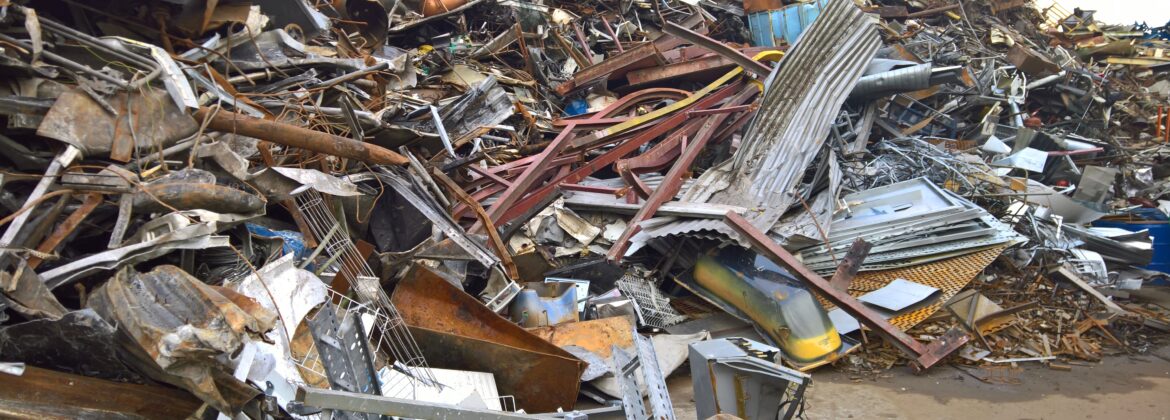by Flextra Engineered Products 0 comment
Reclamation Group says scrap metal prices to stabilise over 18 months even with an export ban
Recycling company The Reclamation Group says that, on account of the already installed increased consumer capacity and the advent of new melting facilities already in the pipeline, over the next 12 to 18 months, a free-market situation will once again prevail within the borders of South Africa, which could and should drive scrap metal prices back to current levels and perhaps even beyond.
Like most commodities, pricing drivers for scrap metal are determined by the economic principles of supply and demand. Initially, the short-term excess could drive prices lower, but not lower than a level where it is no longer commercially viable to collect scrap metal, as the consuming industry cannot afford for the flow of scrap to dry up, adds The Reclamation Group chairperson Dave Kassel.
Further, the company highlights some of the good proposals set out in the Department of Trade, Industry and Competition’s (DTIC’s) recently proposed scrap metal export ban policy, including that an enhanced registration system and improved monitoring, policing and law enforcement will help to address the theft of and trading in stolen scrap metal.
The proposed policy will also support the supply of scrap metal to local industry at affordable prices, as well as the creation of downstream industrialisation or beneficiation, in line with the objectives of the Steel Master Plan. The policy would also contribute to the rebuilding of the South African economy, the company states.
“Of the approximate 3.5-million tons of scrap metal traded a year, less than 600 000 t is being exported as recorded in the International Trade Administration Commission (Itac) export permit applications,” Kassel highlights.
The main differences between the current and proposed permit system are that, under the current permit system, scrap metal can be exported with a permit to an extent that it is not required by the local consuming industry and no permit is required for semi-finished products.
However, under the proposed permit system, no scrap metal can be exported during the six-month prohibition period and a permit will be required for the export of semi-finished products.
“A new registration system will make the trading in stolen material more traceable and, therefore, easier to be monitored and thereby assist the South African Police Service in identifying those responsible.
“An export ban will help to reduce the ability of criminals attempting to trade the stolen material in South Africa, but criminals may still attempt to export stolen material, even under better monitoring and stronger regulations, as is the case with any other criminal activity,” Kassel says.
Additionally, The Reclamation Group says it cannot understand why a six-month ban will lead to the demise of any member of industry organisation Metal Recyclers’ Association (MRA) unless the member refuses to sell into the local market, which remains open to all suppliers and members.
“MRA members have historically sold both locally and into the export market and the local market remains open and is growing as a result of the increased capacity of local consumers,” Kassel notes in response to comments made by the MRA last week.
Additionally, the contention that the quantum of stolen infrastructure is only a fraction of the extent of legitimate scrap metal generated in the country, of about 3.5-million tons a year, ignores the real issue of economic damage caused by the theft of infrastructure.
“A fraction, even as low as 1% of 3.5-million tons, still equates to 35 000 metric tons a year, which translates into enormous infrastructure damage and billions of rands of economic damage. Additionally, it is not the quantity or value of the stolen material that is relevant, it is the resultant economic damage,” The Reclamation Group says.
“For example, the theft of 1 kg of copper cabling, which is worth about R150, can result in many millions of rands of losses owing to the inability to provide a service to customers. This is in line with the findings of the research commissioned by the DTIC that the economic damage of copper theft is estimated at more than R45-billion a year,” Kassel says.
Countering the MRA’s assertion that “recognised recycling and foundry associations, and not private companies that will be motivated by self-gain, can achieve a long-term solution to metal theft that negatively impacts on public and private infrastructure”, The Reclamation Group says theft has nothing to do with the interests of private companies.
The MRA’s membership comprises fewer than 100 members out of more than 3 000 registered and unregistered scrap metal dealers and recyclers in South Africa and whose membership accounts for only about 30% of the volumes of scrap metal traded in South Africa.
“Billions of rands of economic damage a year are caused by the theft of scrap metal and all stakeholders, including private companies, must have a voice. All stakeholders should be motivated to achieve a long-term solution to metal theft for the benefit of South Africa as a whole,” Kassel emphasises.

